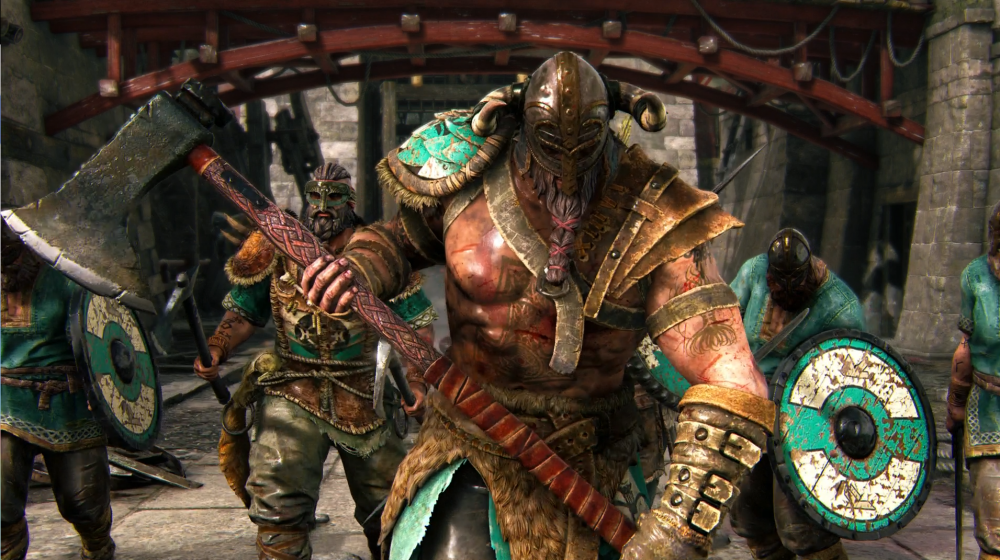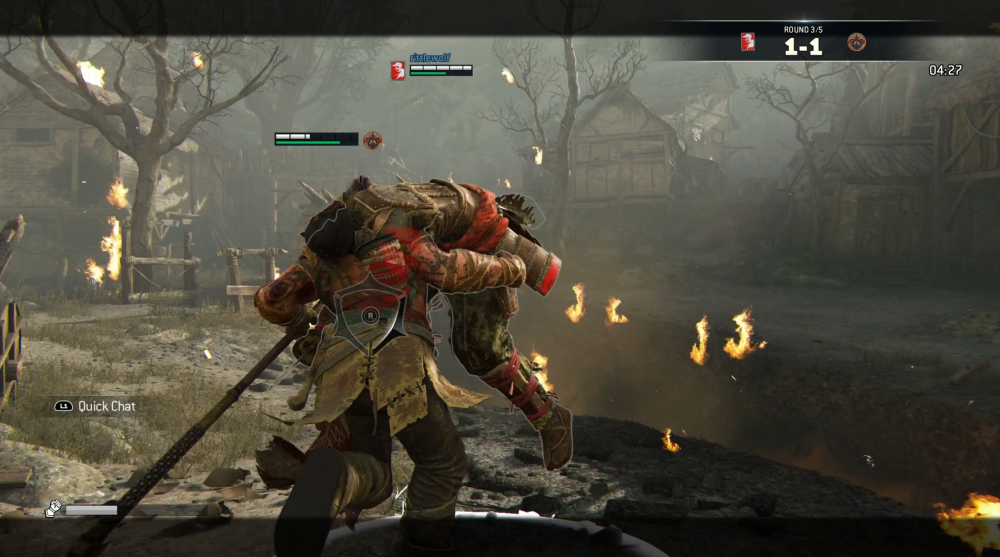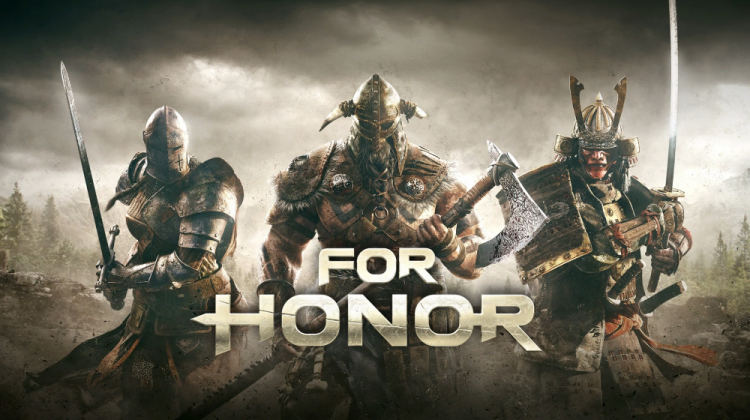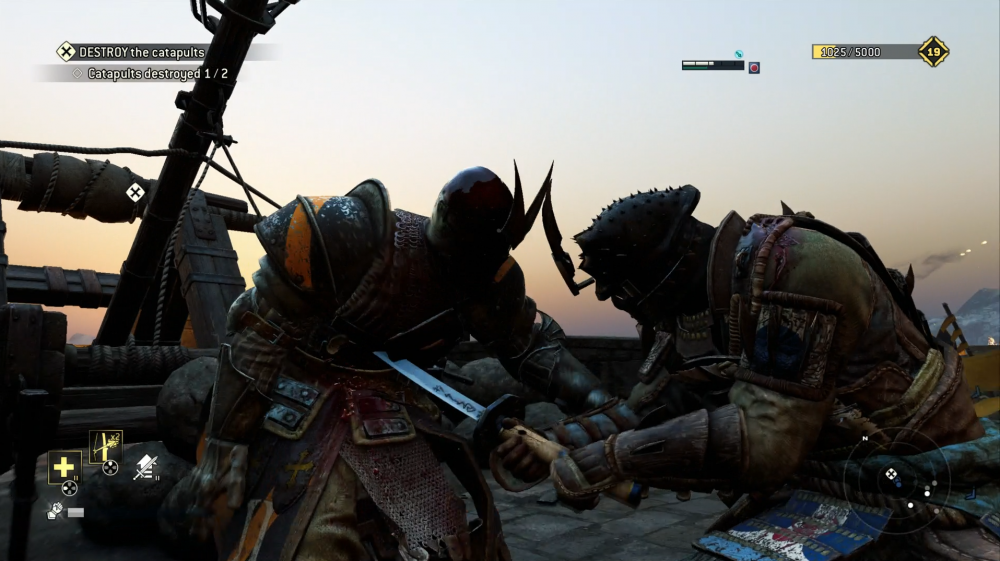Throughout recent years, a new sub-genre of game has been becoming more and more popular in various competitive circles: for ease of use, let’s call them FGAs (Fighting Game Analogues). Now, though they take many forms, FGAs share a constant in that they tend to tickle the fancy of those who love fighting games (hence the name). More often than not, they involve heated competition between two or more players and require timing, knowledge, and skill to meaningfully play. Why is this important? Well, most FGAs are small in scope (Like Nidhogg, Lethal League, or Windjammers/Disc Jam), but Ubisoft has just recently launched the first triple-A FGA in a long while: For Honor.
Game Name: For Honor
Platform(s): Xbox One, Ps4, PC
Publisher(s): Ubisoft
Developer(s): Ubisoft Montreal
Release Date: 2/14/17
Price: $59.99

Simply put, For Honor is a quasi-fighting game that seeks to provide a unique combat experience through giving the player choices between various classes across the Viking, Knight, and Samurai factions; totaling 12 playable characters at launch. Every class is unique: from the Viking Raider’s emphasis on massive throw range to the Samurai Orochi’s hit and run tactics; however, it is the common ground all classes share that make the game as intriguing as it is: the “Art of Battle”. The Art of Battle (AoB) is a common baseline that all classes share that acts as the game’s core fighting mechanic. When fighting, the player can put their character in any of three stances: top, left, and right. When in any given stance, all attacks made will come from the chosen direction and any attacks your opponent makes from that direction will be blocked. This allows combat to flow in a much more free format than many fighting games as any two combos may be made of the same attack sequences, but at the same time can still be unpredictable due to the player being able to change the direction they’re coming from. However, free movement, instant environmental kills, and a UI telling you which direction to block can at times make the competitive experience feel watered down at best and infuriating at worst for players of slow characters.
Art of Battle aside, each character does have a unique feel to them as well as overarching themes being apparent within the factions. For example, the Knights are like living battle tanks, using their sheer mass to tire out and disorient the opponent. However, each class uses this concept differently: the Warden uses it to close distance between attack strings, the Conqueror uses it to wear down the opponent’s stamina while discouraging blocking, the peacekeeper uses it to create distance while her victim bleeds out, and the Lawbringer uses it to bully people into death pits and rob them of their stamina. Every class has its roles to fill as well as marked strengths and weaknesses, making for a welcoming variety of gameplay options and styles.

Naturally, multiplayer battles are the core of For Honor; offering up both capture point and various styles of deathmatches. Despite the seeming lack of game types, the online experience is never dull thanks to the sheer freedom offered by the core gameplay systems. One match could instantly turn into a heated one-on one clash, another could see one player abandoning their opponent in hopes of double-teaming another enemy, and yet another could end in four seconds because the enemy raider threw you off a bridge straight away. With that said, it is here that For Honor must be viewed as a fighting game: replay value comes from both generally enjoying the mechanics that the game has to offer in addition to working to improve as a player.
For Honor also offers up a surprisingly competent single player campaign detailing the rise of the core conflict between the three factions. Split into three faction-centric chapters, the game’s story mode offers up insight into the turmoil each faction caused the next in a rock-paper-scissors-style chain, detailing the knights’ sabotage of viking food supplies to viking raids on the samurai to recoup lost resources to samurai looking to cut the head off of the warmongering snake that is the knight faction.
Considering that the main focus of For Honor is the art of battle system, one would guess that a single player mode would be tacked-on; surprisingly though, the campaign uses strong level design and mission structures interlaced with enemy variety (one-hit minions, basic AoB enemies, heroes, and bosses) to give a varied experience. In addition, playing as opportunistically as possible can cause the film to emulate a medieval action film thanks to basic enemies being so easy to dispose of and the ability to land instant environmental kills on heroes and even bosses. With all that said though, weakly written story and characters turn an invigorating story into a fun yet forgettable affair.
In all, For Honor offers up a microchasm of the fighting game spirit blended with a more laid-back character action feeling to create an accessible and entirely unique experience. The visuals are outstanding, the characters are all unique, and the combat is addicting to boot.
Though it may not be the most robust fighting experience on the market, For Honor is a competitive action experience worth your time.
For Glory
In terms of experimental game design (and in general for that matter) For Honor rises above and provides a stellar experience where many doubted potential quality and fun factor. Though not overly deep, there is plenty of varied fun to be had here.



